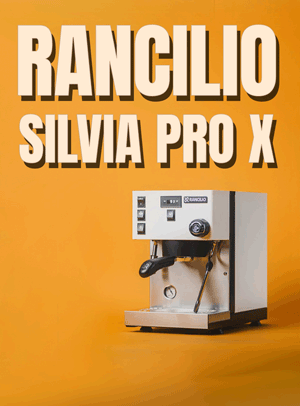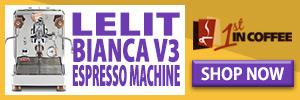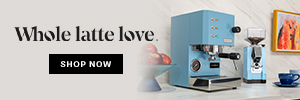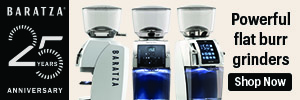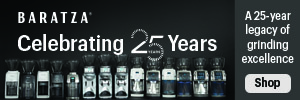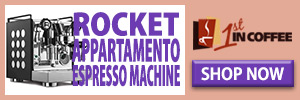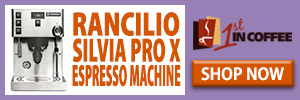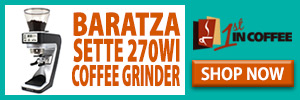In the many trips to Asian cities I’ve made, I never cease to be amazed at the emphasis café business owners place on: 1) the American style of café design and operation and 2) the brand of coffee. The general consensus is that by copying wholesale the American model, success is assured through association. Not so. This assigns a business to the ‘average category’, which can only ever achieve average sales results.
In fact, the often missed most important element for a café is the processing of the coffee and a desired point of difference in the taste and appearance of the product. As an example of how this is not being achieved, if I were to use a standard international espresso coffee taster’s score sheet, the majority of coffees in the market place would fall around the 50% mark of what is possible. This means that despite differences in colour schemes, differences in uniforms, differences in name brand of coffee, there really is NO difference in the product to the customer. And as harsh as this may sound, the result is that these operations are average and do not stand out from the crowd.
The reasons why most companies cannot achieve this important element are many.
As a consultant to many coffee companies around the globe, I have observed that most firms are headed by people who do not fully understand their coffee product. They generally see the product as a commodity, not as having value in itself, and not having a strong enough appeal on its own. This is the reason why many are simply interested in the cost side of the ledger, always asking themselves how can we do it cheaper rather than how can we do it better.
Their major focus is finding cheaper priced coffee and on other pointless paraphernalia which in itself does not guarantee sales growth, including expensive decor, excessive advertising and marketing, and even things like trade mark litigation to protect themselves from perceived threats. All these actions are not only expensive and wasteful of resources, they also miss the point.
And what is the point?
Recognizing Your Front Line
Training of the Barista is the point.
Often seen by small and large enterprises as a cost, training of the Barista in a café is the most invaluable investment in longevity and sales growth that a coffee service business can make.
Take as an example the case of Michel’s Patisserie in Australia. Three years ago its Patisserie stores averaged 6 kilos per week of consumption of espresso coffee. The national average for cafés in Australia was, (and still is) in the vicinity of 11 kilos per week per store.
With a solid commitment shown by the Directors to improving not only the quality of inputs into their dedicated roasting plant (where quality could be monitored and controlled) a heavy emphasis was also placed on leading edge training of franchisees. Training was contracted out to a coffee focused business management group – which lived or died according to achieving desired results. Such an approach ensured the latest and best information and training methodology which was 100% sales focused.
The result is that today all stores in the chain average just over 16 kilos of coffee per week and growing. This has allowed the chain to grow phenomenally, but more amazing is that many stores have achieved over 1000% growth in coffee sales within one year! Not bad for a Patisserie competing against the café sector. And all this in a café market in Australia which has stagnated in the last three years!
And it is almost laughable how simple the approach was, and yet so difficult to maintain.
Enter the Barista
Without trying to trivialize the many years of study on the subject of espresso, the trial and error in business and the subjection to being measure by peers in the industry, it all came down to simplifying a the process of making coffees down to a few replicable steps for the espresso coffee maker to follow – without allowing any exceptions and absolutely no deviation to the rule. Why such fanaticism? So that absolute consistency can be guaranteed. Where customers can rely on a business to be as solid as a rock, delivering exactly what they have always received.
And it cannot be a formula or series of steps devised by some clever person within a coffee company or franchise chain. It must be steps derived from the analysis of the science – the physics and chemistry of coffee – the engineering and practical limitations of all machinery being used regardless of price advantage, and the degree of difficulty imposed upon the operator, combined with a clear understanding that any action or decision undertaken will directly affect sales.
Wrong choices or steps see sales decline, right ones see sales grow. This ‘formula’ is a measured one, full of understanding of the intricacies of the coffee product and business, yet kept simple enough for anyone to understand, and replicate. With absolute consistency.
There are three areas to focus on when it comes to creating the perfect espresso based coffee. Knowing all the requirements of these three areas guarantee sales growth in any market, any demographic region, in any economic situation. Yet I challenge you to find a business producing consistent results day in day out, regardless of which Barista is on the machine, in all three areas. They are: Extraction of coffee; Texturing of Milk; and Presentation.
Too many variables come into play when each individual is given rudimentary training and left to their own devices by management (because they understand less) and where there does not exist a continual set of quality control checks. Putting the responsibility back on the people at the ‘coal face’ is a start towards accountability. Training enhances a feeling of ownership, and begins to iron out inconsistencies in product from one maker to the other. And the training I am speaking of must be continual – regular, such as once a week or once a fortnight, and full of assessments and measures. No one in their right mind would expect a sporting team to win a competition without regular training sessions, yet I am amazed at how many businesses expect to ‘win’ against their competition without a systemized training programme!
And many have sworn black and blue that they and all their staff are being consistent, only to be discovered that this is untrue. Not because of any devious motives of the owner, but simply because they do not possess the technical knowledge and observation skills to determine otherwise. The great leveler which proves this is sales figures.
At the end of the day, regardless of how good people tell me they are, those businesses which are consistent in Extraction, Texturing and Presentation of coffees achieve minimum sales growth of 100% in 12 month and anywhere up to 3500%. Fantastic I know, but all recorded results. Benchmarking by companies and stores against industry averages mind locks an operation into an ‘average’ way of thinking, and deprives them of the kind of sales success I have mentioned.
And all this achieved through a simple investment in training.










